Disclosure: This article contains affiliate links. We may earn a commission from purchases at no extra cost to you, which helps our travel content.
There's something profoundly humbling about standing where Charles Darwin once stood, camera in hand, watching marine iguanas dive into turquoise waters as blue-footed boobies perform their mating dance mere feet away. After decades of traveling to some of the world's most spectacular destinations, I can say with certainty that the Galápagos Islands represent nature's most extraordinary living laboratory—and a wildlife photographer's ultimate paradise. As someone who's balanced marathon training with luxury hospitality across four continents, I've developed a deep appreciation for experiences that blend physical engagement with mindful observation. My recent two-week photographic expedition through these volcanic islands offered exactly that—an intimate encounter with species found nowhere else on Earth, all against the backdrop of landscapes that feel almost primordial in their raw beauty.
Planning Your Galápagos Photography Expedition
The Galápagos archipelago spans 18 main islands across 45,000 square kilometers of protected marine reserve—a UNESCO World Heritage site that demands thoughtful preparation for any serious photographer.
My journey began six months before departure, researching the islands' unique wildlife patterns and securing permits through a specialized expedition company. Unlike my typical luxury hotel experiences in urban settings, the Galápagos operates under strict visitor regulations designed to protect its fragile ecosystem. Each island has designated visitor sites, and the Galápagos National Park limits the number of tourists at any location.
For photographers, this means selecting an itinerary that balances the iconic islands (Santa Cruz, Isabela) with lesser-visited gems like Española and Genovesa, which often provide more intimate wildlife encounters. I opted for a 12-day luxury expedition cruise aboard a 16-passenger yacht, which allowed access to remote islands impossible to reach on day trips.
Equipment preparation proved equally important. The Galápagos presents unique challenges: salt spray, volcanic dust, and constantly changing light conditions. My camera backpack became command central, housing my primary camera bodies, lenses ranging from wide-angle to telephoto, and essential accessories including polarizing filters crucial for cutting glare when photographing marine subjects.
Perhaps most importantly, I invested time learning about the islands' endemic species and their behaviors. Understanding that land iguanas are most active in early morning or that blue-footed boobies perform their distinctive mating dance during specific seasons (April-June) dramatically improves your chances of capturing compelling images.
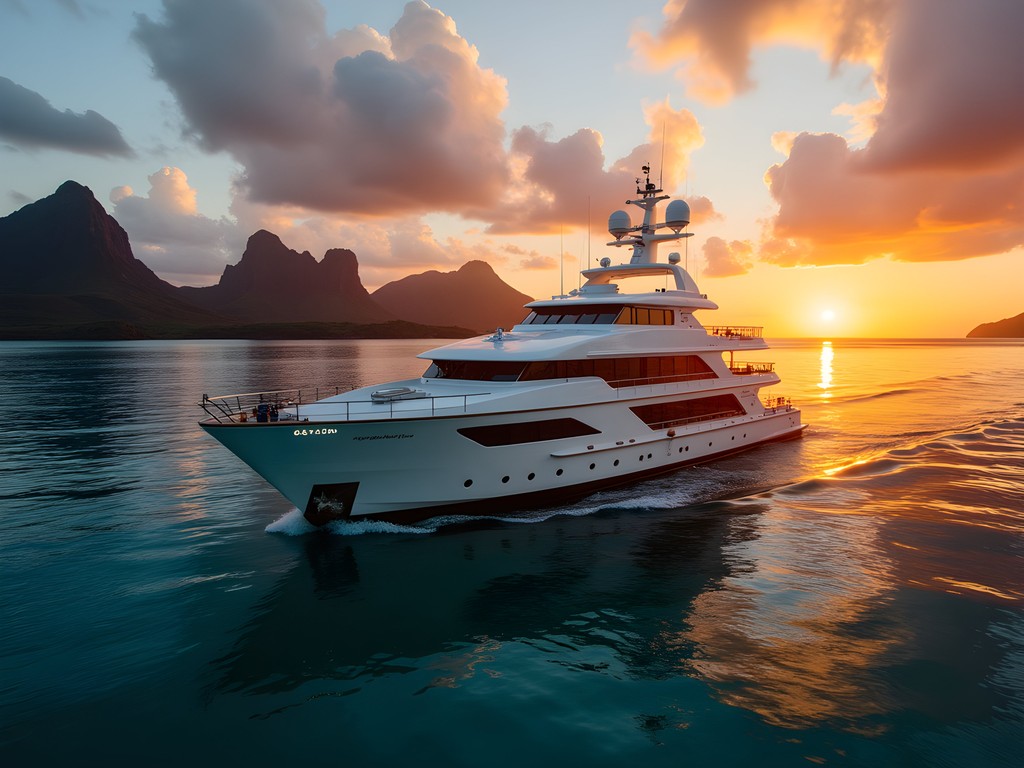
💡 Pro Tips
- Book your trip at least 6-8 months in advance to secure permits and preferred itinerary
- Choose a small vessel (16 passengers or fewer) for more intimate wildlife encounters and photography opportunities
- Pack twice as many memory cards and batteries as you think you'll need—charging opportunities can be limited
Essential Photography Gear for the Galápagos
The question I'm asked most frequently about my Galápagos expedition isn't about the animals themselves, but rather: "What camera equipment did you bring?" While the islands' wildlife is remarkably approachable, proper gear significantly elevates your photographic results.
My primary workhorse was my mirrorless camera paired with three essential lenses: a 16-35mm wide-angle for landscape and environmental portraits of larger animals, a versatile 24-105mm for general shooting, and critically, a 100-400mm telephoto zoom for wildlife portraits and behavior documentation. The silent shooting capability of mirrorless systems proved invaluable for not disturbing wildlife.
Unlike African safaris where extreme telephoto lenses are mandatory, the Galápagos' approachable wildlife means mid-range telephotos often suffice. The national park enforces a two-meter minimum distance from animals, but many species—particularly sea lions and marine iguanas—will approach much closer on their own accord.
Waterproof protection became essential when moving between islands on zodiac boats. My camera rain cover protected against salt spray during landings, while a selection of microfiber cloths allowed for quick lens cleaning throughout the day.
Perhaps the most underrated piece of equipment was my lightweight carbon fiber tripod. Though I initially debated bringing it given weight restrictions on inter-island flights, it proved indispensable for low-light photography of nocturnal species and for achieving tack-sharp images of distant subjects with telephoto lenses.
Finally, underwater photography presented a compelling opportunity. Rather than risking my primary camera system, I utilized a dedicated underwater camera for snorkeling sessions with sea turtles, marine iguanas, and playful sea lion pups. Its macro capabilities captured stunning details of colorful starfish and other marine invertebrates.
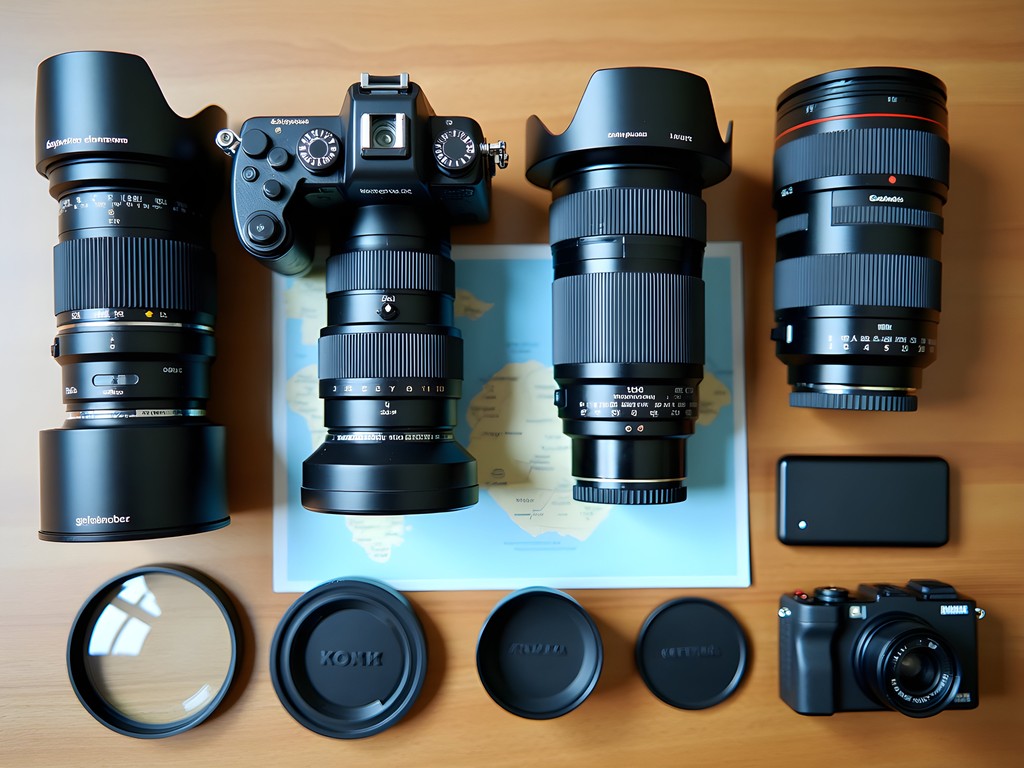
💡 Pro Tips
- Bring lens cloths and silica gel packets to combat humidity and salt spray
- A polarizing filter is essential for cutting water glare and enhancing colors in the harsh equatorial sun
- Consider renting rather than purchasing specialty lenses if this is a one-time trip
Mastering Wildlife Photography Techniques
The Galápagos presents a fascinating paradox for photographers: while wildlife is extraordinarily approachable, capturing compelling images that transcend typical documentation requires technical mastery and patience.
My approach evolved significantly throughout my two weeks. Initially overwhelmed by the sheer proximity and quantity of wildlife, I found myself shooting hundreds of images daily. By day three, I shifted to a more intentional strategy—focusing on behavior, interaction, and storytelling rather than mere documentation.
The islands' harsh equatorial light demands attention to timing. I quickly established a rhythm: rising before dawn for golden hour photography when many species are most active, retreating to the yacht during harsh midday light, then returning to shore for late afternoon and sunset sessions. This schedule aligned perfectly with my marathon runner's discipline of early mornings and strategic rest periods.
Patience became my greatest asset. One morning on Española Island, I spent three hours in a single position photographing waved albatross during their elaborate courtship ritual. The resulting images captured intimate moments impossible to achieve with a cursory visit.
Technically, I relied heavily on continuous autofocus tracking for birds in flight and marine mammals in motion. Exposure compensation became second nature in the challenging lighting conditions—typically +1/3 to +2/3 stops to preserve detail in darker subjects against bright volcanic landscapes or reflective water.
Perhaps most importantly, I learned to work within the ethical guidelines that make the Galápagos special. This meant never baiting animals, maintaining minimum distances unless they approached me, and occasionally sacrificing a "perfect shot" to prioritize the welfare of sensitive species. This ethical approach ultimately produced more authentic images that captured natural behaviors rather than contrived situations.
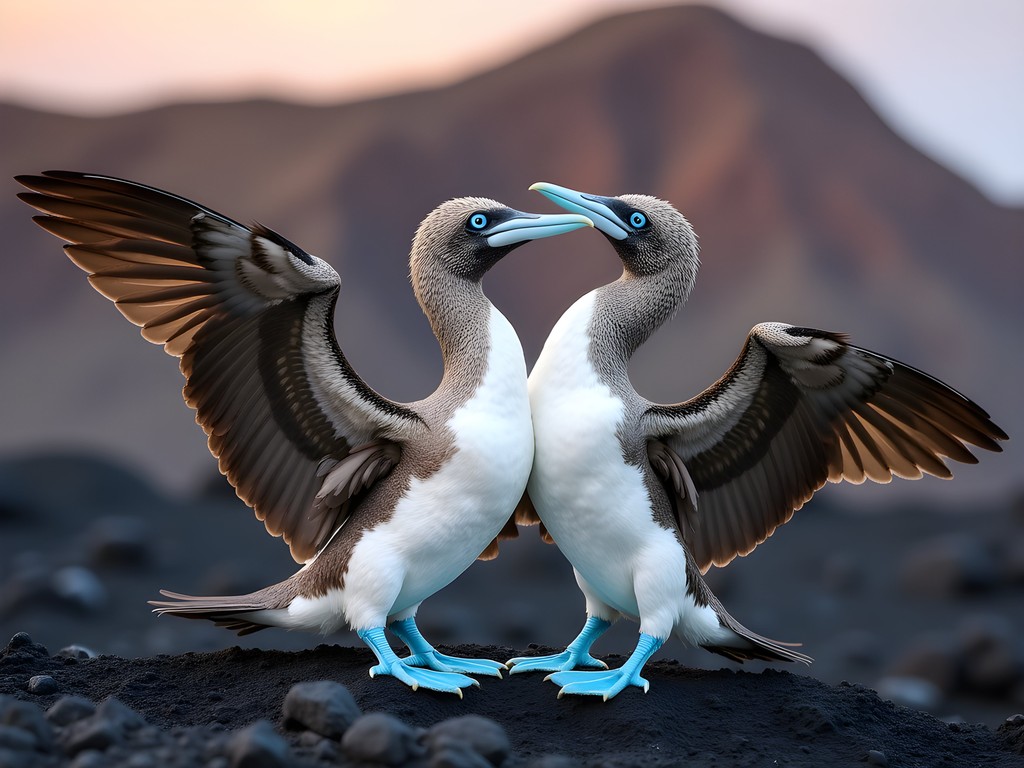
💡 Pro Tips
- Focus on capturing behavior and interaction rather than just portraits of individual animals
- Use burst mode judiciously for action sequences like blue-footed booby dives or sea lion play
- Experiment with unusual perspectives—get low to the ground for marine iguanas or shoot upward for frigatebirds
Island-by-Island Photography Guide
Each Galápagos island offers distinct photographic opportunities based on its endemic species and landscapes. Having visited 11 islands during my expedition, I've developed a photographer's guide to the archipelago's most compelling locations.
Santa Cruz: The most developed island serves as an excellent introduction. The Charles Darwin Research Station provides controlled access to giant tortoises and land iguanas, allowing photographers to practice techniques before encountering wildlife in more natural settings. The highlands offer lush landscapes and wild tortoises in their natural habitat—I recommend visiting during early morning when fog creates mystical scenes around these ancient creatures.
Española: For bird photographers, Española represents the crown jewel. Between April and December, waved albatross establish their only breeding colony in the world here. The island's southwestern point, Punta Suárez, offers dramatic cliff landscapes where these massive birds perform elaborate courtship rituals and practice their precarious takeoffs and landings. The island also hosts exceptionally colorful marine iguanas with red and green coloration not seen elsewhere.
Isabela: The archipelago's largest island features five active volcanoes and diverse ecosystems. The western coast at Urbina Bay provides rare opportunities to photograph flightless cormorants—an endemic species that evolved to lose flight capabilities. Nearby Elizabeth Bay offers stunning mangrove ecosystems where I captured some of my favorite images of sea turtles feeding among golden rays.
Genovesa: Known as "Bird Island," remote Genovesa hosts massive colonies of red-footed boobies, Nazca boobies, and frigatebirds. Darwin Bay's tidal pools create natural frames for bird photography against volcanic elements. The island's isolation means wildlife here exhibits even less fear of humans—I was able to photograph hunting short-eared owls from just meters away using only a standard zoom lens.
Fernandina: The youngest and most pristine island offers the archipelago's most primordial landscapes. At Punta Espinoza, thousands of marine iguanas bask in dense colonies against stark lava fields—creating striking black-on-black compositions that challenge and reward careful exposure technique. The island also hosts the largest concentration of Galápagos hawks, providing exceptional raptor photography opportunities.

💡 Pro Tips
- Research which endemic species are found on each island to prioritize your itinerary accordingly
- North Seymour and Española offer the best bird photography opportunities
- Fernandina and western Isabela provide the most dramatic volcanic landscapes as photographic backdrops
Underwater Photography Adventures
While the Galápagos' terrestrial wildlife justifiably receives significant attention, the marine ecosystem offers equally extraordinary photographic opportunities. As someone who's photographed extensively in underwater environments from New Zealand's Milford Sound to Thailand's Andaman Sea, I can confidently state that the Galápagos presents unparalleled underwater visibility and marine life diversity.
My approach combined daily snorkeling excursions with two dedicated dive days arranged through our expedition vessel. The archipelago's convergence of currents creates nutrient-rich waters supporting remarkable biodiversity, from tiny seahorses to massive whale sharks (seasonal).
For snorkeling photography, I alternated between my dedicated underwater camera and a waterproof housing for my main camera system. The clearest waters were consistently found at Devil's Crown off Floreana Island and Champion Islet, where visibility often exceeded 30 meters. These sites allowed for wide-angle compositions capturing entire schools of fish against coral formations.
The most challenging yet rewarding underwater photography came during encounters with marine iguanas feeding on underwater algae. These prehistoric-looking creatures—the world's only marine lizards—dive to depths of 10+ meters, requiring photographers to freedive alongside them to capture their underwater feeding behavior. The contrast between their black bodies and the vibrant green algae creates striking compositional opportunities.
Perhaps my most memorable underwater photography session occurred at Punta Vicente Roca on Isabela Island, where I spent an hour photographing Pacific green sea turtles against a backdrop of underwater volcanic formations. The site's cold, nutrient-rich waters also attract mola mola (ocean sunfish), creating truly unique wide-angle opportunities when these massive, peculiar fish appear from the depths.
For those serious about underwater photography, I recommend bringing your own mask and snorkel for proper fit and comfort during extended sessions. Our expedition provided quality rental equipment, but having my personal mask with prescription lenses significantly improved my ability to compose images underwater.
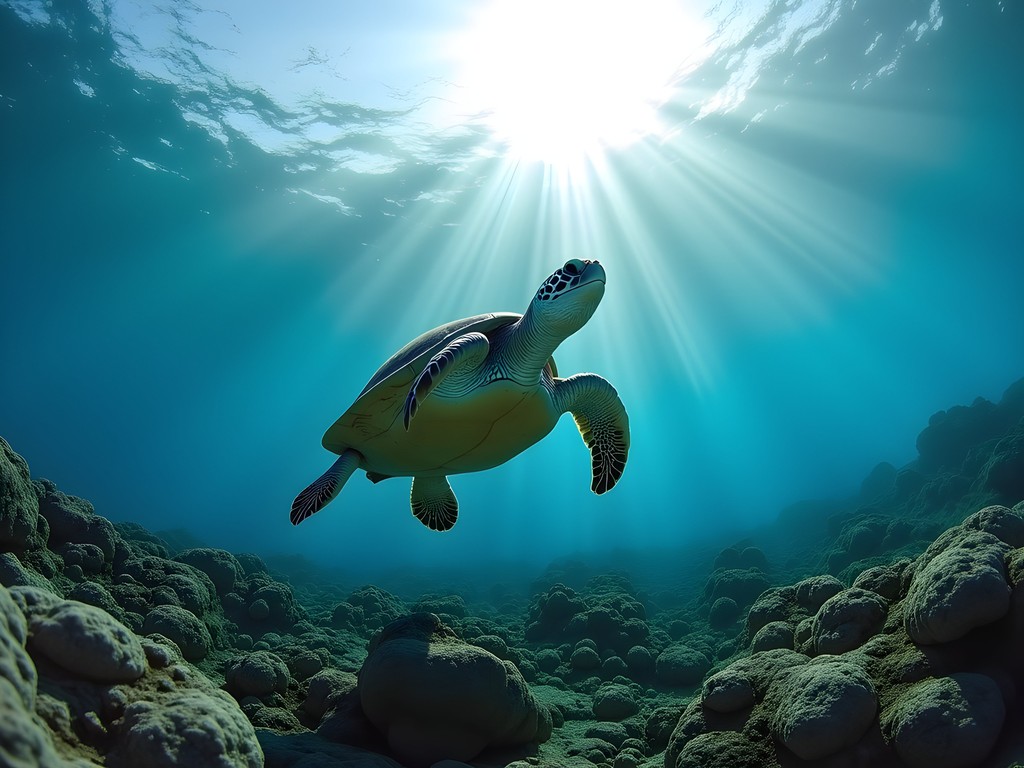
💡 Pro Tips
- Use natural light for underwater photography whenever possible—artificial lighting can disturb marine life
- Adjust white balance underwater to compensate for the blue color cast that increases with depth
- Practice buoyancy control to avoid disturbing sensitive marine environments while photographing
Sustainable Photography Practices in a Fragile Ecosystem
The privilege of photographing in the Galápagos comes with significant responsibility. As someone who's witnessed the impact of overtourism on fragile environments across four continents, I approach wildlife photography with a conservation-first mindset that shapes every creative decision.
The Galápagos National Park has established strict guidelines that actually enhance photographic opportunities by preserving authentic wildlife behavior. These include maintaining minimum distances from animals (typically 2 meters), never using flash photography with wildlife, staying on marked trails, and always being accompanied by certified naturalist guides.
Beyond these baseline requirements, I adopted additional practices to minimize my environmental footprint while maximizing photographic results. This included using longer focal lengths rather than physical proximity when possible, practicing patience rather than pursuing or repositioning animals, and limiting my time with any individual animal to reduce stress.
The islands' delicate balance between tourism revenue (which funds conservation) and ecological preservation creates a fascinating case study in sustainable travel. My background in luxury eco-hospitality gave me particular appreciation for operations like our expedition vessel, which employed advanced waste management systems, used solar desalination for fresh water, and operated with stringent protocols to prevent introduction of invasive species between islands.
Perhaps most importantly, I've found that these ethical constraints actually improved my photography. By observing rather than interfering, I captured authentic behaviors and interactions impossible to manufacture. My favorite image from the entire expedition—a marine iguana and lava lizard in a seemingly contemplative moment on Santiago Island—resulted from two hours of patient, distant observation rather than aggressive positioning.
As photographers, our images have power beyond mere documentation. The photographs I've created serve as visual advocacy for this irreplaceable ecosystem, hopefully inspiring others to support conservation efforts that ensure these extraordinary species survive for generations of future photographers to document.
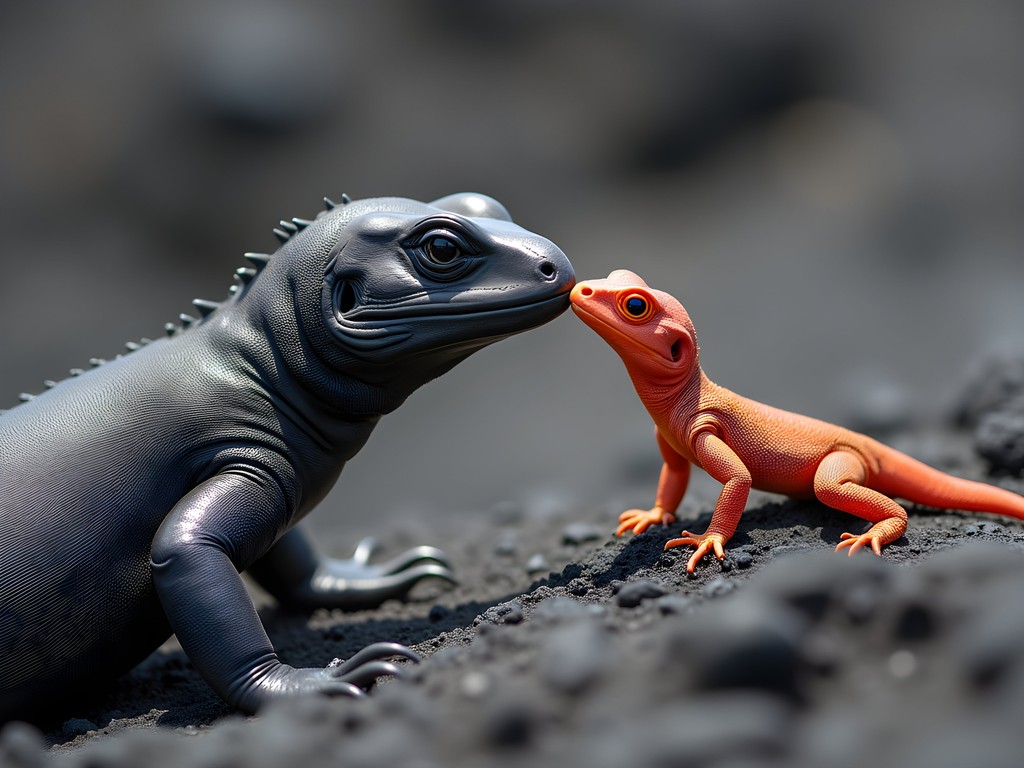
💡 Pro Tips
- Always prioritize animal welfare over getting the 'perfect shot'
- Learn about species behavior before your trip to anticipate photographic moments without disrupting natural activities
- Consider donating images to conservation organizations working to protect the Galápagos ecosystem
Final Thoughts
As I review thousands of images from my Galápagos expedition, I'm struck not just by the extraordinary wildlife encounters captured in my viewfinder, but by how this remote archipelago fundamentally shifted my approach to nature photography. In these islands where evolution's laboratory continues its work, I learned that truly exceptional wildlife photography emerges from patience, ethical practice, and deep connection with your subject. The Galápagos demands we slow down, observe more intently, and photograph with greater purpose.
For photographers considering this journey, understand that the islands will challenge and reward you in equal measure. You'll return with memory cards full of images impossible to capture elsewhere on Earth—and with a renewed appreciation for conservation that inevitably shapes future creative work. As Darwin himself noted after his transformative visit: 'The natural history of these islands is eminently curious.' Our cameras allow us to share that curiosity with the world.
✨ Key Takeaways
- The Galápagos offers unparalleled wildlife photography opportunities with species found nowhere else on Earth
- Small expedition vessels provide the best access to remote islands and photography locations
- Ethical photography practices yield better results while protecting this fragile ecosystem
- Underwater photography opportunities rival terrestrial subjects in diversity and accessibility
📋 Practical Information
Best Time to Visit
Year-round, with December-May offering calmer seas and June-November providing more active wildlife
Budget Estimate
$8,000-15,000 for a comprehensive 2-week luxury expedition including flights
Recommended Duration
10-14 days minimum to visit multiple islands
Difficulty Level
Moderate - Requires Basic Fitness For Daily Landings And Hikes
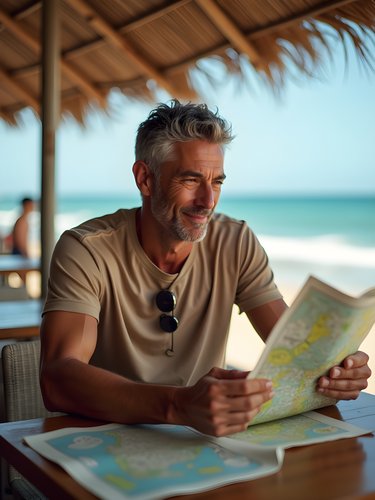








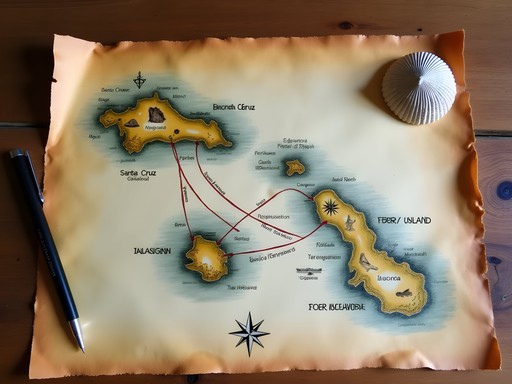
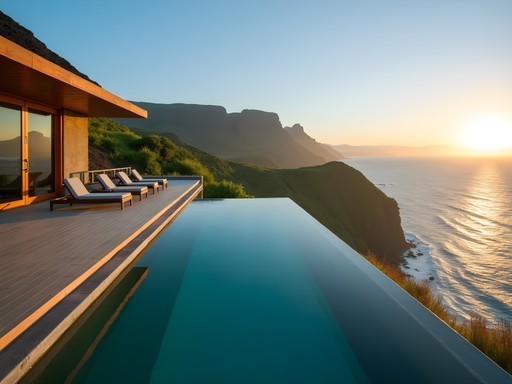






Comments
Kimberly Murphy
Brandon, this post brings back so many memories! Your island-by-island guide is spot on. For anyone planning a trip, I'd add that Santa Cruz has amazing opportunities to photograph tortoises in the highlands. We spent hours watching them in the wild! Also, don't forget underwater photography - the marine life is just as spectacular as what's on land. The snorkeling at Kicker Rock near San Cristobal gave me some of my best shots of sea turtles and rays. Brilliant post that captures the magic of these islands!
mountainvibes
Kimberly - did you need special underwater gear? I'm planning to go back next year and want to capture the marine life this time.
Kimberly Murphy
Just a good underwater point-and-shoot was enough for me! The visibility is amazing and the marine life comes so close. Make sure to visit Los Tuneles on Isabela if you can - best place for underwater photography!
sunnygal
Your tortoise photos are incredible! How did you get that low angle shot? Looks like you were practically eye-level with them!
winterlover
Going in March! What lens did you use for the wildlife shots?
sunnygal
Not the author but I used a 70-300mm when I went and it was perfect for most wildlife. The animals get so close!
winterlover
Thanks! I have a 100-400mm but worried about carrying something that heavy on the islands.
Kimberly Murphy
I'd definitely bring the 100-400mm! The extra reach is brilliant for capturing birds in flight. I used my camera backpack which made carrying my gear between islands so much easier. The weather-resistant material was perfect for those wet landings!
mountainvibes
Just got back from the Galápagos last month and your photos are wayyy better than mine, Brandon! Those marine iguanas were so hard to capture - they blend right into the lava rocks! Did you find that the animals were as fearless as everyone says? I was shocked when a sea lion pup basically came right up to me on the beach. Definitely the most unique wildlife experience I've ever had.
Kimberly Murphy
The fearlessness of the wildlife is what makes Galápagos so special! I had a similar experience with sea lions last year - they're like curious puppies! Did you visit North Seymour for the blue-footed boobies?
mountainvibes
Yes! North Seymour was incredible for the boobies and frigatebirds. Their mating displays were amazing to watch. So much easier to photograph than birds back home that fly away the second they see you!
skyway9860
Just booked my trip after reading this! Any tips on which islands are best for photographing sea lions? They're my absolute favorite!
Brandon Tanaka
Awesome! San Cristobal has incredible sea lion colonies - especially at La Loberia beach. They're super playful there and will often swim right up to you. Just remember to keep the recommended distance!
skyway9860
Perfect, adding La Loberia to my must-visit list! Can't wait!
nomadzone
Those tortoise shots are epic! 🐢
mountainzone
Great post! I'm planning a trip for next April and wondering about camera gear. Did you find a telephoto lens essential or would a good all-purpose zoom be enough? Also, how challenging was it to protect your equipment from water/salt spray during boat transfers?
Brandon Tanaka
I'd definitely recommend a telephoto (at least 200-300mm) for bird photography, though many animals let you get surprisingly close. For protection, I used my camera bag which kept everything dry during zodiac transfers. Bring plenty of lens cloths for salt spray!
mountainzone
Thanks for the tips! Will definitely invest in a good telephoto and plenty of lens cloths.
roamlife
I'm planning a trip for next year but I'm a photography newbie. Would you recommend renting better gear specifically for this trip or will my basic DSLR with kit lens be enough to capture decent wildlife shots?
oceanbackpacker
Not Brandon, but I went with just my entry-level DSLR and a 55-250mm lens. Got amazing shots because you can get SO close to the animals! They literally don't move away from you. A polarizing filter helped a ton with the water shots though.
Brandon Tanaka
Great question! @oceanbackpacker is right - the wildlife's approachability makes the Galápagos perfect for beginners. Your kit lens will work for many situations, but I'd recommend renting just one lens: a 70-300mm zoom. You'll appreciate the extra reach for birds and some marine shots. The animals are close but not always *that* close! Also, bring twice as many memory cards as you think you'll need - everyone takes way more photos than they expect!
roamlife
Thank you both! That's really helpful and makes me feel better about not needing to invest thousands in gear. Will definitely look into renting that zoom lens!
Savannah Torres
This brought back so many memories of our family trip last summer! My kids were absolutely mesmerized by the marine iguanas - we called them 'mini dragons.' Getting good shots while managing three excited children was quite the challenge! I found that early mornings were magical for photography, especially at Tortuga Bay. The light was perfect and the wildlife seemed more active. Brandon, did you find that certain times of day worked better for specific islands? Your island-by-island guide is incredibly helpful for our next visit!
Brandon Tanaka
Hi Savannah! Yes, timing is everything. North Seymour was best mid-morning for frigate birds, while Española's afternoon light was perfect for albatross photography. Love that your kids called the iguanas 'mini dragons' - so fitting!
skyway9860
Mini dragons is the perfect name for them! My daughter was terrified at first but then couldn't stop following them around.
vacationexplorer
Wow Brandon, your photos are absolutely stunning! The blue-footed boobies look even more vibrant than I imagined. This post is making me seriously consider a Galápagos trip next year!
Brandon Tanaka
Thanks so much! The blue-footed boobies were definitely a highlight - their mating dance is even more impressive in person!
Venture X
Premium card with 2X miles, $300 travel credit, Priority Pass